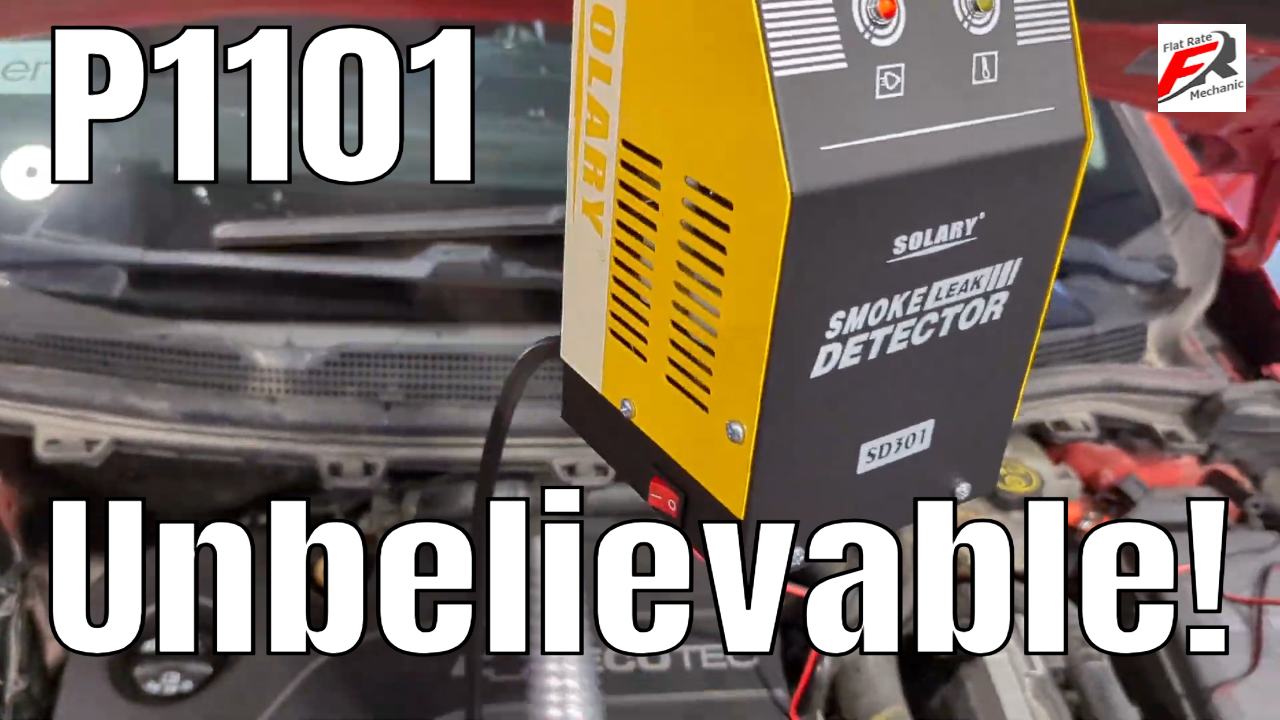Understanding the P1101 Code
The P1101 code primarily indicates a problem with the Mass Airflow (MAF) sensor in Chevy Cruze and Malibu models. This sensor plays a crucial role in measuring the volume of air entering the engine, which is essential for maintaining the correct air-fuel ratio. A fault in the MAF sensor can lead to inefficiencies in engine performance, including reduced power output, decreased fuel efficiency, and potential stalling or starting issues.
Diagnostic and Repair Guide
- PCV Valve and Mass Airflow System Inspection: Begin by inspecting the PCV valve for any signs of faultiness. A rattling sound from the valve upon shaking indicates it needs replacement. For the MAF sensor, use an OBD-II scanner to check for proper voltage readings. Abnormal readings suggest the sensor needs replacement.
- Oxygen Sensor Check: A faulty oxygen sensor might contribute to the P1101 code by storing additional trouble codes. Replace any malfunctioning sensors to avoid exacerbating the issue.
- Air Filter and Throttle Body: Inspect the air filter for any blockages that could restrict airflow to the engine. A dirty throttle body can also impede airflow, necessitating cleaning or replacement if it’s contributing to the P1101 code.
- Vacuum Leak Identification: Vacuum leaks in the engine can disrupt the air-fuel mixture, leading to the P1101 code. Utilize a smoke machine to detect leaks in the intake manifold or any part of the air intake system. Smoke emanating from any component indicates a leak that must be repaired.
- Inspecting the Intake Hose: Damage or leaks in the intake hose can lead to issues similar to those caused by vacuum leaks, as they can allow unmeasured air into the engine, disrupting the air-fuel balance.
Preventive Maintenance Tips
- Regularly inspect and clean the MAF sensor and replace the air filter as needed to prevent blockages.
- Inspect hoses and connections within the air intake system for signs of wear or damage and replace as necessary to prevent future vacuum leaks.
Now, let’s explore the steps you can take to resolve the P1101 code and get your Chevy Cruze or Malibu back on track:
- Inspect MAF Sensor Connections: Begin by inspecting the connections to the MAF sensor. Ensure that the electrical connector is securely attached and that there are no visible signs of damage or corrosion.
- Clean MAF Sensor: Over time, the MAF sensor can accumulate dirt, oil, or other contaminants, affecting its performance. Use a specialized MAF sensor cleaner to carefully clean the sensor. Be gentle to avoid damaging delicate components.
- Check Air Filter: A clogged or dirty air filter can also cause issues with airflow, leading to MAF sensor problems. Inspect the air filter and replace it if necessary.
- Inspect for Vacuum Leaks: Vacuum leaks can disrupt the airflow and lead to irregular MAF sensor readings. Perform a thorough inspection of the vacuum lines and connections, repairing any leaks you find.
- Reset ECM: After completing the above steps, reset the ECM to clear the trouble code. You can do this by disconnecting the battery for a few minutes or using a diagnostic tool.
- Monitor Performance: Once you’ve addressed the potential causes of the P1101 code, monitor your vehicle’s performance. If the check engine light remains off and the engine operates smoothly, you’ve likely resolved the issue.
Professional Assistance:
If you’re uncomfortable performing these steps yourself or if the issue persists after attempting the fixes, it’s advisable to seek assistance from a qualified mechanic or dealership. They have the expertise and diagnostic tools necessary to accurately diagnose and address the problem.
Conclusion:
Encountering the P1101 trouble code on your Chevy Cruze or Malibu can be concerning, but it’s not an insurmountable obstacle. By following the steps outlined above, you can effectively diagnose and resolve the issue, restoring your vehicle’s performance and efficiency. Remember, regular maintenance and prompt attention to warning signs are key to keeping your vehicle running smoothly for years to come.


